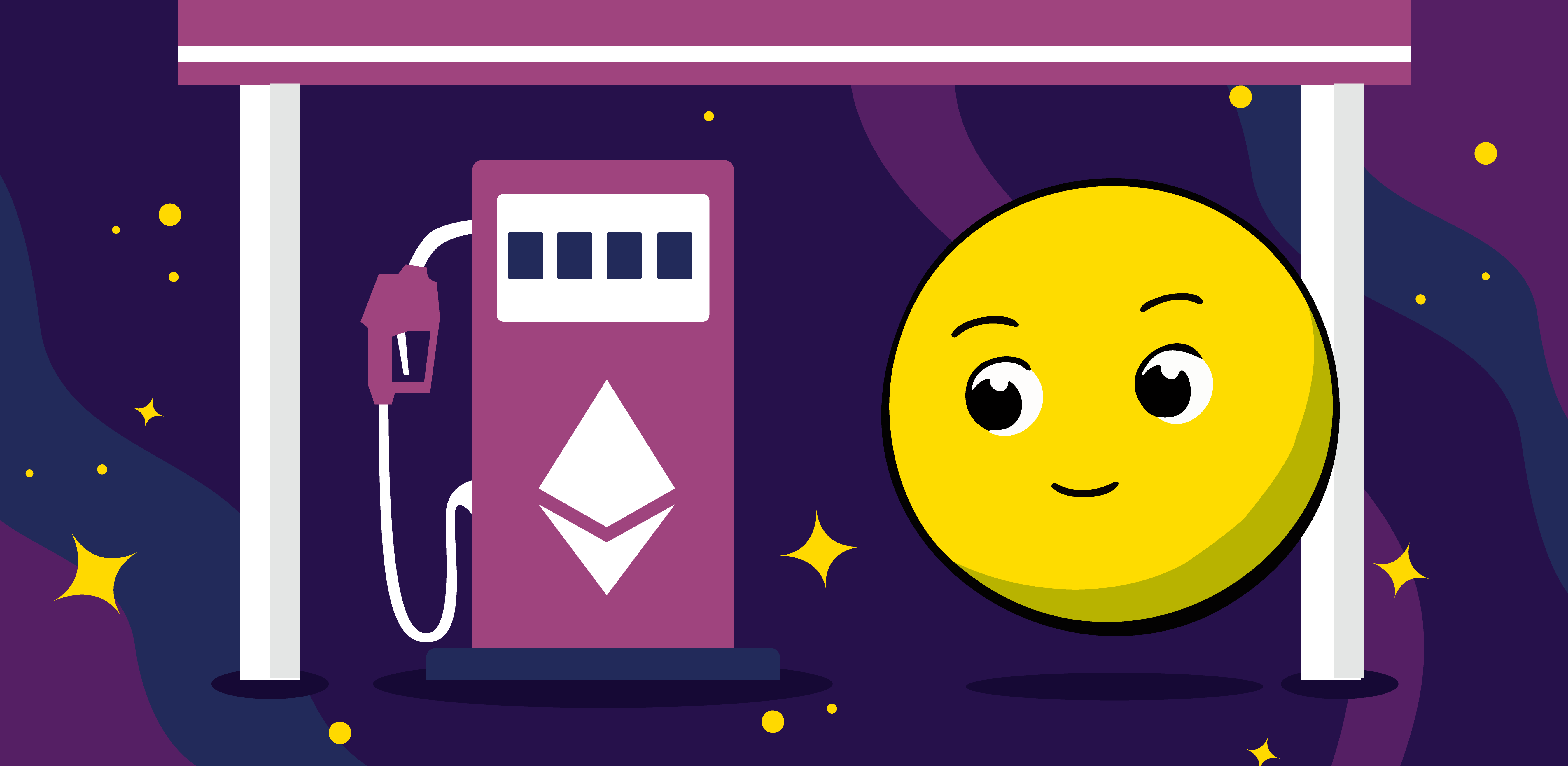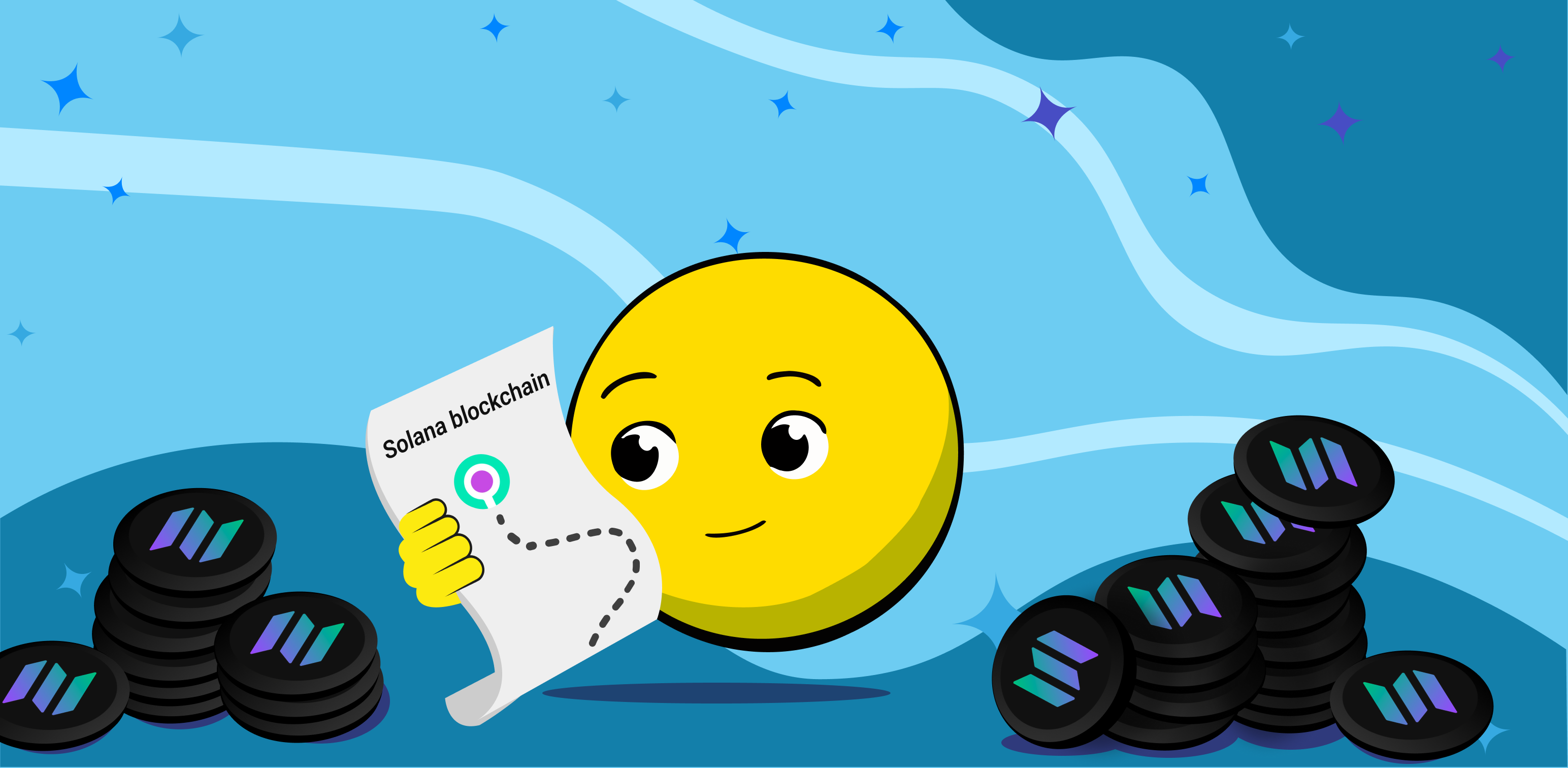
Just as bank customers pay a commission for the transfer, so do cryptocurrency users. And if in the case of, for example, Bitcoin, the commission amount is transparent and manageable by users, then Ethereum gas fees for the transfer are calculated in a more complicated way.
The reason for this difference in the principle of collecting fees is that Bitcoin was created to conduct transactions between users. Ethereum was created not as a payment system, but as a tool for developing decentralized applications. The main function of Ethereum is different — maintaining the operation of smart contracts which is used not only inside the Ethereum network but also in the DeFi ecosystem.
The Ethereum blockchain has limited bandwidth and is not adapted for conducting financial transactions, which is why any complex structures overheat it. Any major interference in the work of Ethereum will raise commissions, whether it is the work of smart contracts or the purchase of assets.
The growth in the number of users of the DeFi market has increased the complexity of the Ethereum system, which has led to an increase in commissions within the network and made them less predictable.
How do transactions work on the Ethereum network?
When sending a transaction in the Ethereum blockchain, a fee is charged in the form of "Gas", but what happens if you specify an insufficient amount?
There are three scenarios for working with Gas.
First: there was more gas than it took for the transfer. Then, all unspent gas will return to the sender at the rate at the time of dispatch.
Second: there was exactly as much gas as needed. Then the payment will go through without any problems, nothing will be returned to the account.
Third: there was not enough gas. Then the transaction is considered unconfirmed and canceled. Immediately after the cancellation, the Ethereum Blockchain will roll itself back to the state before sending, and the spent gas is not returned. Note that the blockchain cancels only changes made by an unconfirmed transaction.
What is Ethereum Gas?
Gas is a unit of measurement of computing work performed by miners to conduct transactions or support smart contracts of the Ethereum network.
Gases were also introduced to stimulate miners: in the case of blockchain networks, the security of the network is directly proportional to its hash rate, that is, the number of miners.
This system allows them to receive a commission commensurate with their resource costs, because the more complex the transaction, the more gas is required to complete it.
The term gas can mean two things: gas limit and gas price.
Gas price
The price of gas can be set by two authorities, depending on who you are dealing with. The first is the Ethereum blockchain itself, which sets the cost of fuel depending on its load. The higher the load, the higher the commission.
The second is a smart contract created by a participant of the blockchain that you are paying for. When creating a smart contract, for example, to raise funds for an ICO or IPO, the contract creator sets the cost of commissions.
The Gas price is measured in the minimum part of the Ethereum network – Wei. However, in almost all wallets, this parameter is shown in Gwei. Below is the fragmentation of ETH:
1 ETH = 1 000 finnely = 1 000 000 szabo = 1 000 000 000 gwei = 1 000 000 000 000 000 000 wei
The three main units of measurement WEI, GWEI, Szabo and Finnely are named after famous people who influenced the formation and development of cryptocurrencies.
WEI is dust from ETH, in reality, it is practically not used. The main area of use of WEI is writing code. Execution of one line of code in the Ethereum blockchain costs 1 WEI, it can be a smart contract code or any other operation. GWEI is used to pay the commission. Finney is something like a pocket change, equal to 0.001 Ether, intended for small transfers. Ether, aka ETH, is used for everything else.
Gas limit
The minimum amount for the transaction is 21 thousand units.
It is recommended to set a higher Gas limit value to be sure that the transaction is completed successfully. If the amount of Gas is not enough for a successful outcome, the transaction will be returned with the status "unsuccessful". Regardless of what the result was, Gas is paid to the miner, since they have already spent resources on processing this operation.
Usually, developers fix the value that is written off for the successful implementation of the smart contract. So, if you need to make a transaction, and you have set a Gas limit of 500 thousand Gas, and only 30 thousand Gas is needed to make a transaction, then only 30 thousand Gas will be written off from you. But if, for example, 500 001 Gas is needed to conduct a transaction, then the program will not give a result, and this amount will be spent.
How to avoid high ETH gas fees and calculate the right number of Gwei to pay the commission correctly?
Use https://ethgasstation.info — this service specifies Ethereum gas price calculation giving you recommended commission values for the transfer so the transaction will pass.
There is also an alternative from Etherchain — https://www.etherchain.org/tools/gasPriceOracle
You can find an Ethereum gas tracker at https://ethstats.net
When are Ethereum Gas Fees Lowest?
There are also general patterns that you can focus on to know what is the best time for low eth gas fees. Even though Ethereum is a network available around the world 24/7 and 365 days a year, since the launch of EIP—1559 in August 2021, the base fees have generally been higher during business hours in the United States.
Interestingly, the morning period from midnight to 8 a.m. Eastern time has a lower base commission compared to working hours in the United States (from 9 a.m. to 5 p.m.). In addition, gas is also cheaper on weekends.
The cost of gas is also affected by the intensity of use of Tether, USDC, and NFT, which also increases during working hours in the United States. Regardless of the reason, all of this can provide an interesting opportunity for time-independent transaction planning.
How will the launch of the new Ethereum 2.0 network reduce the commission?
Now Ethereum is a blockchain based on PoW (Proof-of-work) or the computing power of miners. When switching to PoS (Proof-of-stake), the computational load on the network is expected to decrease. For example, in the Ethereum PoS sidechain, validators will take the role of miners mining cryptocurrency. To become a validator, you will need to freeze 32 ETH on the account.
The Ethereum 2.0 system should increase the network bandwidth and should allow for more transactions per second. The point is controversial: if the number and speed of transactions increase, then the cost of Gas may also rise. In any case, to know for sure, you should wait for the transition of the Ether from PoW to PoS.




